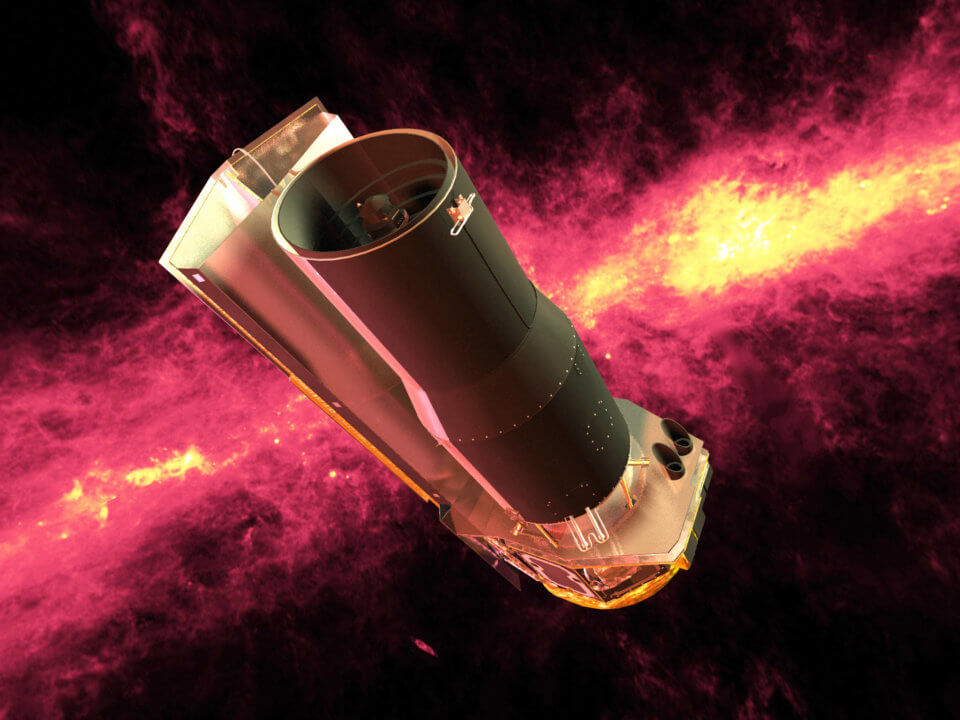Tonight at 8pm you will find the brightest star in the night sky due south. This star is called Sirius and is part of the constellation Canis Major. Learn more about Sirius. Image courtesy of Torsten Bronger. derivative work: Kxx / CC BY-SA (http://creativecommons.org/licenses/by-sa/3.0/)
Comet ATLAS: A reason to look up
For weekly updates on Comet ATLAS, please visit McDonnell Planetarium Night Sky Updates. After a two-decade drought of bright comets in the Northern Hemisphere, newly discovered Comet ATLAS stands a chance of brightening our sky – and our lives – this spring. Comets are frozen hunks of gas, ice, and dust that orbit our Sun… Continue reading
Night Sky Update: March 27-April 2, 2020
This is the Saint Louis Science Center’s NIGHT SKY UPDATE for the week of Friday, March 27, 2020. Information updated weekly or as needed. Times given as local St. Louis time (CDT). For definitions of terminology used in the night sky update, click the highlighted text. Our next star party scheduled for Friday, April 3,… Continue reading
Astronomy Fact of the Day: March 27, 2020
In 1968 on this date, Yuri Alekseyevich Gagarin, the first person in space, died in an airplane crash. Due to his fame following his space flight, the Soviet leadership did not want to risk him on another flight, but they later relented; while requalifying for flight status, he crashed his MiG-15 trainer, and was killed… Continue reading
Astronomy Fact of the Day: March 26, 2020
In our solar system, planets closer to the sun are called inferior. Planets that are further from the sun are called superior. Superior planets are always at their best during what is called opposition. This is when they are closest to Earth for the year. Learn more opposition planets.
Astronomy Fact of the Day: March 25, 2020
On this date in 1655, Christiaan Huygens discovered Titan, one of Saturn’s moons. Learn more about Titan Image courtesy of NASA / Public domain
Astronomy Fact of the Day: March 24, 2020
Today both Venus and Mercury reach greatest elongation. This is when they will be seen as far from the sun and as such will be at their best for viewing. Venus will be seen in the west after sunset. Mercury will be seen in the east before sunrise Learn more elongation
Astronomy Fact of the Day: March 23, 2020
In 1912 on this date, Werner von Braun was born in Wirsitz, Poland. Although he developed the V-2 rocket bomb, after the war he came to the United States, where he became the leader of America’s ‘Rocket Team.’ He developed the Redstone and Jupiter missiles, and the Saturn rockets that took the United States to… Continue reading
Astronomy Fact of the Day: March 22, 2020
On January 1, 2019 the New Horizons spacecraft flew by its second target in the Kuiper Belt. Originally named 2014 MU69 this object is now named Arrakoth. Learn more about Arrakoth. Image Courtesy of: NASA/Johns Hopkins University Applied Physics Laboratory/Southwest Research Institute/Roman Tkachenko. / Public domain
So Long, Spitzer
After over 16 years exploring the unseen infrared light of the cosmos, NASA officially powered down the Spitzer Space Telescope on January 30, 2020. The Spitzer Space Telescope is one of NASA’s four “Great Observatories.” Launched between 1990 and 2003, the Hubble Space Telescope, the Compton Gamma Ray Observatory, the Chandra X-ray Observatory, and the… Continue reading








